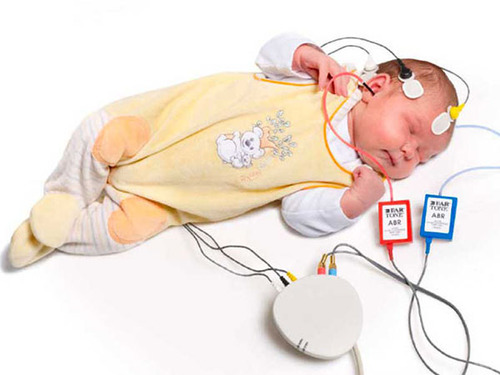The BERA test measures the reaction of the parts of a child’s nervous system that affect hearing. The ABR test measures the auditory nerve’s response to sounds. It performed if a newborn or infant fails the hearing screening test given in the hospital shortly after birth, or for older children if there is a suspicion of hearing loss that was not confirmed through more conventional hearing tests.

The BERA is a helpful tool in determining a child’s ability to hear. The test uses a special computer to measure the way the child’s hearing nerve responds to different sounds.
Three to four small stickers called “electrodes” will be placed on your child’s head and in front of his or her ears and connected to a computer. As sounds are made through the earphones, -the electrodes measure how your child’s hearing nerves respond to them.
The audiologist, or hearing specialist, looks for certain neurological “markers” as your child’s hearing nerves respond to sounds. The softest intensity or loudness level at which these markers appear roughly corresponds to the child’s hearing level in that frequency range or pitch. By reading a computer printout of your child’s responses and interpreting these markers, the audiologist can tell if your child has a hearing problem.
The OAE (Otoacoustic Emissions) test checks part of the inner ear’s response to sound. The test is mostly done on infants and children who may not be able to respond to behavioral hearing tests because of their age.
What are otoacoustic emissions?
Otoacoustic emissions are sounds given off by one small part of the cochlea when it is stimulated by soft clicking sounds. When the sound stimulates the cochlea, the outer hair cells vibrate. The vibration produces a nearly inaudible sound that echoes back into the middle ear.
How is the test done?
Soft foam or rubber tips are placed in your child’s ear. Your child will hear soft sounds through the soft foam or rubber tips. A computer will record quiet echoes from the ear.
How should I prepare for the test?
Your child is not required to sleep during this test. However, for this test, your child, and everyone in the room, must be able to sit still and be very quiet. Your child will not feel anything during this test.
How long is the test?
This test should only take a few minutes.